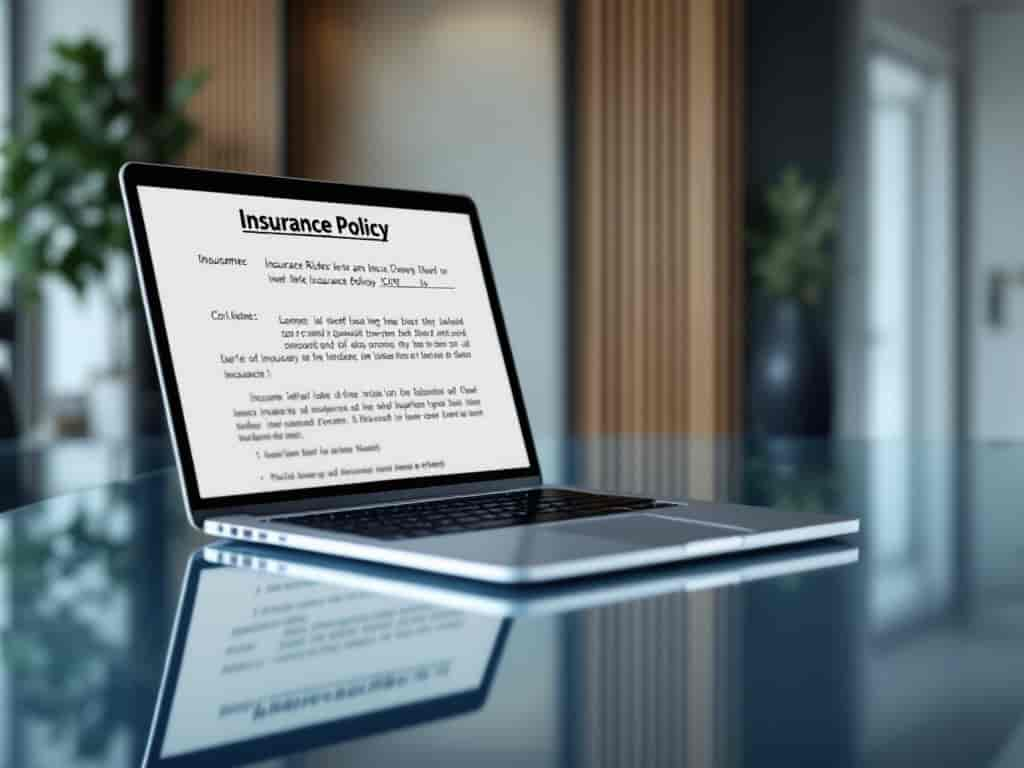How to Read an Insurance Policy: Simplified
Ellie Moore

Photo: How to Read an Insurance Policy: Simplified
How to Read an Insurance Policy: Simplified
When it comes to securing your financial well-being, few things are as crucial as understanding your insurance policy. However, reading and interpreting an insurance policy can feel like decoding an ancient manuscript. With a little guidance and some helpful tips, you’ll discover that learning how to read an insurance policy is more straightforward than you might think. This in-depth guide will walk you through the core sections of a policy, clarify confusing insurance terms, and offer real-life examples that demystify the fine print. By the end, you’ll know exactly how to evaluate your insurance coverage and ensure you have the protection you need.
Why It’s Important to Understand Your Insurance Policy
1. Financial Security
An insurance policy isn’t just paperwork it’s a shield against unexpected expenses. Whether you’re dealing with home, auto, health, or life insurance, being familiar with your policy coverage helps you identify what costs will be covered and what your out-of-pocket expenses might be.
2. Avoiding Coverage Gaps
Lack of clarity on your insurance coverage can lead to shocking surprises. If you assume your policy includes certain protections like flood coverage in a home policy only to discover later it doesn’t, you could face substantial losses.
3. Making Informed Decisions
When you truly know how to read an insurance policy, you can make confident choices about deductibles, coverage limits, and additional endorsements. This ensures your policy aligns perfectly with your risk tolerance and budget.
4. Building Trust with Your Insurer
Understanding your insurance policy fosters trust in your insurance provider. You’ll be more comfortable asking questions, clarifying ambiguous terms, and negotiating coverage changes, which can ultimately save you money and reduce stress.
Key Sections of an Insurance Policy
Most insurance policies whether for home, auto, or health are structured similarly. By identifying these sections, you can break down the document into digestible parts.
1. Declarations Page
The Declarations Page is often the first page in your insurance policy. It includes vital details such as:
- Policy number
- Policyholder’s name and address
- Coverage limits
- Deductibles
- Policy term (start and end dates)
If you want a quick snapshot of your policy coverage, this is where to look first. It’s essentially the “front door” to your insurance policy, and understanding it is key to knowing the scope of your coverage.
2. Insuring Agreement
The Insuring Agreement outlines the specific insurance coverage provided. This section states the risks your insurer has agreed to cover, like collision damage in auto insurance or certain named perils in a homeowner’s policy. If you’re wondering exactly what is covered, this portion of the insurance policy holds the answer.
3. Exclusions and Endorsements
No insurance policy is unlimited. The Exclusions section details the circumstances or events your policy does not cover. For instance, a typical homeowners policy might exclude damage from floods or earthquakes unless you buy additional coverage.
Endorsements, on the other hand, modify your policy coverage. Sometimes called “riders” or “attachments,” endorsements can add, remove, or clarify coverages. They are often used to customize an insurance policy to meet your specific needs.
4. Conditions and Definitions
Conditions describe the rules you and your insurer must follow for the insurance policy to remain valid. These rules may involve premium payments, procedures for filing a claim, or obligations to report certain changes in your life (like buying a new car).
Definitions clarify key insurance terms used throughout your policy. If you come across unfamiliar language while learning how to read an insurance policy, consult the definitions section for a quick explanation.
Step-by-Step Guide on How to Read an Insurance Policy
Learning how to read an insurance policy can be easier if you tackle it methodically. Below is a step-by-step strategy to help you digest the document without getting overwhelmed.
- Skim the Declarations Page
- Verify that all personal details are correct.
- Check the policy term, coverage limits, and deductibles to make sure they match what you discussed with your agent.
- Review the Insuring Agreement
- Identify exactly which risks are covered.
- Note any special conditions or endorsements listed.
- Examine Exclusions Thoroughly
- Make a list of the events or losses your insurance policy excludes.
- If the exclusions conflict with your needs, ask about additional endorsements or supplementary policies.
- Study the Conditions Section
- Understand your responsibilities, such as paying premiums on time or notifying the insurer about changes.
- Look for any obligations after a loss occurs, like specific documentation you must provide.
- Review the Definitions
- Cross-reference any confusing insurance terms you come across.
- Keep this section handy as you move through your policy.
- Consider Endorsements
- If you’ve added endorsements, read them carefully to understand how they alter your insurance policy.
- Some endorsements have additional costs, while others restrict your coverage.
- Take Notes and Ask Questions
- Jot down uncertainties or concerns and discuss them with your agent or insurance company.
- Request clarification on ambiguous language or coverage details.
- Revisit the Declarations Page
- Confirm that the coverage you’ve just read about matches the declarations listed.
- Ensure all endorsements and changes are clearly reflected.
By following these steps, you’ll not only gain a full picture of your insurance coverage, but you’ll also feel more at ease should you need to file a claim or update your policy in the future.
Common Pitfalls to Avoid When Reading an Insurance Policy
Even when you know how to read an insurance policy, certain mistakes can slip through the cracks. Here are common pitfalls to avoid:
- Not Reviewing Updates
Policies often renew annually. If you automatically renew your insurance policy without revisiting the terms, you might miss new exclusions or changes in coverage limits. - Ignoring Fine Print
The small text often contains crucial information about deductibles, waiting periods, or limitations. Skipping these details can cost you big time. - Assuming Full Coverage
Just because an event is typical like water damage doesn’t mean your insurance policy covers it. Always verify whether a specific peril is included or excluded. - Overlooking Policy Exclusions
Thinking you’re covered for everything can lead to financial disaster. If there’s any doubt, check the Exclusions section or contact your insurer. - Not Comparing Quotes and Coverages
Even if you feel confident in your insurance coverage, comparing policies from different providers can sometimes reveal cheaper rates or better coverage for the same cost.
Real-Life Example: A Homeowner’s Policy Gone Wrong
Imagine you buy a new home in an area prone to occasional flooding. You’ve purchased a standard homeowners insurance policy and assume everything is covered. A month later, torrential rains flood your basement, causing thousands of dollars in damage to your flooring and personal belongings. When you file a claim, you discover that flood damage is explicitly excluded in your policy coverage. You’re left paying out of pocket for repairs.
This could have been prevented by thoroughly reviewing the Exclusions section or by asking your agent specifically about flood coverage. Learning how to read an insurance policy might have saved you not only money but considerable stress in this scenario.
Actionable Tips to Maximize Your Insurance Coverage
- Bundle Policies
Consider bundling home and auto insurance policies to potentially lower your premium. This can also simplify the process of tracking policy renewals. - Ask About Discounts
Insurance companies often offer discounts for installing security systems or maintaining a good driving record. Inquire about available discounts before finalizing your insurance policy. - Keep an Inventory
For homeowners and renters, maintaining a detailed inventory of your personal belongings complete with photos and receipts can speed up claims processes and ensure accurate reimbursements. - Review Regularly
Schedule an annual review of your insurance policy. Your needs may change over time, and regular reviews ensure you’re paying for the right level of coverage. - Clarify the Claims Process
Ask your insurance agent about the claims process. Knowing ahead of time what paperwork or evidence you’ll need can expedite claim approvals.
FAQ: How to Read an Insurance Policy
- What is the simplest way to start reading an insurance policy?
Begin with the Declarations Page to verify your personal information, coverage limits, and deductibles. This page provides a concise overview of your policy coverage. - Why do I need to read the Exclusions section?
The Exclusions section specifies events or perils not covered by your insurance policy. Reading it can help you avoid costly misunderstandings about your coverage. - How often should I review my insurance policy?
It’s recommended to review your policy annually or whenever a significant life event occurs, such as getting married, buying a new car, or moving to a new home. - What are endorsements?
Endorsements (or riders) modify your insurance coverage by adding, removing, or clarifying certain conditions. They help customize a policy to match your needs. - Can I change my insurance policy mid-term?
Yes, most insurers allow you to make changes to your insurance policy at any time. However, you may face premium adjustments or administrative fees. - Is it okay to rely only on my insurance agent’s explanation?
While insurance agents are valuable resources, it’s essential to read your insurance policy yourself. Agents can provide clarity, but they might overlook specific details that are crucial to your situation. - What if I don’t understand some policy terms?
Consult the Definitions section or reach out to your agent for clarification. Understanding these terms is critical for grasping your policy coverage fully.
Final Thoughts
Understanding how to read an insurance policy is about empowerment. By breaking down the document into manageable sections like the Declarations Page, Insuring Agreement, Exclusions, Endorsements, and Conditions you arm yourself with the knowledge to make informed decisions. Whether it’s avoiding unexpected costs, ensuring adequate coverage for your assets, or making smart adjustments to your insurance policy over time, a keen awareness of policy details will serve you well.
If this article helped you feel more confident in navigating your insurance documents, feel free to share it with friends and family who might also benefit. Have questions, feedback, or personal experiences about reading an insurance policy? Leave a comment below and let’s continue the conversation!
By following these guidelines, you’ll be well on your way to confidently managing your insurance coverage. Remember, knowledge is your best defense against unwelcome surprises.
Finance & Investment
View All
May 6, 2025
Selene Finance LP Mortgage InfoMaster expert SEO content to boost rankings, traffic & brand trust. Learn to create valuable, authoritative content aligned with Google's E-E-A-T principles.
Ellie Moore

April 16, 2025
Masters in Finance Career OutlookDominate search with expert SEO content. Discover how to create authoritative, user-centric content that ranks high by mastering intent, research & value.
Ellie Moore

November 8, 2024
Blue-Chip Stocks: The Ultimate Safe Haven for Long-Term InvestorsFind safety and stability in blue-chip stocks. Discover the ultimate long-term investment strategy. Secure your financial future today!
Ellie Moore

April 8, 2025
Vehicle Finance Calculator Free ToolMaster expert SEO content to dominate search, build trust, and satisfy Google's E-E-A-T. Your guide to high-quality ranking.
Ellie Moore

March 29, 2025
Yahoo Finance Stock Tracker for BeginnersGo beyond keywords. Learn to create expert SEO content that prioritizes users, demonstrates E-E-A-T, and truly ranks by providing value.
Ellie Moore

October 29, 2025
Yahoo Finance App Full ReviewGo beyond keywords! Learn to craft expert SEO content that truly serves users, demonstrates E-E-A-T, and achieves top search rankings. Get tangible results.
Ellie Moore
Insurance
View AllIs pet insurance right for you? Explore the pros, cons, and costs of coverage to keep your furry friend healthy.
Ellie Moore
Save on premiums with usage-based auto insurance. Learn how your driving habits shape coverage and costs!
Ellie Moore
Stay safe with these tips to identify and avoid common insurance scams. Protect yourself from fraud and make informed decisions.
Ellie Moore
Is earthquake insurance worth it? Learn about coverage, costs, and risks to make an informed decision for your property.
Ellie Moore
Decode your insurance policy! Learn to understand terms, coverage, and conditions with this beginner-friendly guide.
Ellie Moore
Enhance your coverage with insurance riders. Learn about their types, benefits, and why they’re crucial for customizing policies.
Ellie Moore
Education
View AllProviding education in conflict zones is a major challenge. Learn about the barriers and efforts to ensure learning continuity in crisis situations.
Read MoreHelp students develop a love for learning! Discover effective ways to foster a growth mindset in students and promote lifelong success.
Read MoreArts education is key to fostering creativity. Learn why it’s important in schools and how it helps students develop essential life skills.
Read MoreSudbury schools embrace radical self-direction in learning. Learn how they empower students to take full control of their education journey.
Read MoreMultilingual education promotes diversity and cultural understanding. Learn why it matters and how it benefits students in a globalized world.
Read MoreOutdoor learning promotes cognitive and social growth. Explore how nature-based education enhances learning outcomes and student well-being.
Read MorePopular Post 🔥
View All
1
2
3
4
5
6
7
8
9
10
Health






Automotive
View All
August 25, 2025
KC Automotive Trusted Experts Near You
Seeking trusted auto repair in KC? Our guide connects you with reliable experts for safe, long-lasting car care & peace of mind.

September 4, 2025
Top Automotive Posters For Garage Decor
Revamp your garage! Discover how automotive posters transform your space into a personalized sanctuary, reflecting your passion for cars & speed.

August 20, 2025
B&D Automotive Repair Done Right The First Time
B&D Automotive: Get repairs done right the first time! Save money, ensure lasting vehicle health, and gain peace of mind on the road.

July 30, 2025
Automotive AC Service Near Me For Cool Drives
Ensure cool, comfortable drives! This guide covers car AC service, common issues, and finding reliable repair to keep your vehicle's AC running perfectly.

August 26, 2025
Mastertech Automotive Repairs And Diagnostics
Mastertech Automotive decodes modern car repairs. Get expert diagnostics for complex vehicles, ensuring precise fixes & peace of mind.

February 13, 2025
Racing Culture: From Tracks to Local Events
Dive into the vibrant world of racing culture. From thrilling track days to community events, explore how car enthusiasts unite over speed and style.
















